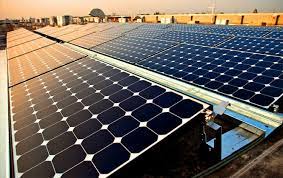
A solar power purchase arrangement (PPA) is a financial agreement between customers and developers. The developer will coordinate the design, financing, permitting and installation of a solar system on a customer’s property.
Despite the zero-dollar down payment requirement, there are downsides. We’ll be discussing how a solar PPA works and its pros and cons.
WHAT DOES A SOLAR PPA DO?
A homeowner, also known as a host customer, can sign up with their solar installer/developer for a PPA and agree to the terms. Solar PPA contracts typically last between 5 and 25 years.
The solar developer will then place panels on your home (most often on a rooftop). The contract will cover any generated solar energy. This energy is not just handed to the host customer for free.
The developer will sell the power to the homeowner at a fixed price, which is less than the local utility’s retail rate. Solar PPAs would not be worthwhile if the only purpose of the solar power plant were to generate clean, renewable electricity.
Any additional solar power generated by the panels is sent directly to the local grid. You can still take advantage of Net Metering if available in your region. However, this is only to a limited extent.
Your solar developer technically owns the solar panel system. You won’t be eligible for federal incentives such as the solar tax credit (ITC), local rebates, and incentives like the solar renewable energy credits (SRECs) most often associated with net-metering.
The developer is responsible for all necessary solar panel maintenance and repairs and replacement during the duration of a solar PPA agreement. Customers can extend the contract or have the panels taken out, but they cannot buy the system once the contract term is over.
[Related: Is it worth it to invest in solar panels? How to Make a Decision
SOLAR PPA PROS
These are some of the benefits you can expect when signing up for a solar PPA.
Low to no extra costs
Developers take care of the initial costs involved in solar panels, including sizing, purchasing, and installing the system. You can get a solar panel system for as low as 0% and begin saving with solar immediately after operational.
REDUCED ELECTRICITY RATE
The developer offers a fixed electricity rate to homeowners. Because electricity costs are more predictable, this helps households budget. There are two ways to structure your rate:
- Fixed Escalator Plan: This plan will allow customers to pay increases in electricity costs at a fixed rate, which typically falls between 2 and 5%. This rate is usually lower than those charged by utilities.
- Fixed price plan This plan keeps the same rate for the entire term of your solar PPA contract. Customers can depend on the same rate for many years, even if utility prices rise.
[Related to The Average Cost of Solar Panels & Installation ]
NO MAINTENANCE OR REPAIR RESPONSIBILITY
Developers technically own the solar panels that are listed under a solar PVPA. They are responsible for all repairs and maintenance.
Let’s suppose your panels sustain damage from inclement weather such as a hurricane. Or they are experiencing the low performance. Your developer will fix and maintain your panels to ensure they continue operating at their maximum performance.
BETTER LEVERAGE THAN INCENTIVES
Solar PPAs benefit developers because they can take advantage of tax credits to lower the system’s overall cost.
You won’t be eligible for certain tax credits if you are a municipal customer or another public entity with low taxable income. These customers won’t be eligible for the ITC because it is only available for residential solar.
INCREASE IN PROPERTY VALUE
Customers also gain because solar panel systems improve home value.
The nature of solar PPAs is long-term. This allows agreements to be transferred between property owners. This helps increase the property’s appeal when it comes time for sale. This is only possible if the new owner wishes to install solar panels in their home. Otherwise, the panels must be removed.
